Surrounded by dense boggy forest just north of Port McNeill are the ruins of the Suquash Coal Mine. Taking the short walk to the mine ruins is one of the best things to do near Port McNeill, offering an unique insight to the history of the area, as well as a chance to walk through the forest and make your way down to Suquash Bay.
Highlights include several large rusting pieces of machinery, as well as the tall stone chimneys – all that remain of the mine manager’s house.
Surface coal in the Suquash area was originally known about by the local Kwakwaka’wakw people, who shared their knowledge with the HBC. The Kwakwaka’wakw insisted that they themselves mine the coal, but were happy to sell it to the company. They hand-dug the coal and delivered it by canoe, until the surface coal was all but gone. In 1849, thirteen years after the trade relationship began, the HBC set up nearby Fort Rupert and began mining for themselves. The once-friendly relations between the two parties soured as British miners were imported to work in the Suquash Mine, replacing the Kwakwaka’wakw.
The Suquash Mine operated between 1849 and 1851, and again from 1908 to 1922, totaling over 23,000 tonnes of coal extracted. At its peak Suquash had a loading dock, approximately 20 houses for families, a bunkhouse for single miners, a company store, a post office, a school, an electrical generator, and numerous buildings for different mine operations. By 1932, the mine was abandoned, its remaining equipment auctioned off, and the mine shafts filled with water to prevent gas explosions. Today what little remains of Suquash is slowly being overtaken by forest.
Continue reading this blog post for everything you need to know to visit the Suquash Mine ruins on Vancouver Island for yourself, including distance, elevation gain, how to get there, the best time to visit, and lots of photos of my experience.
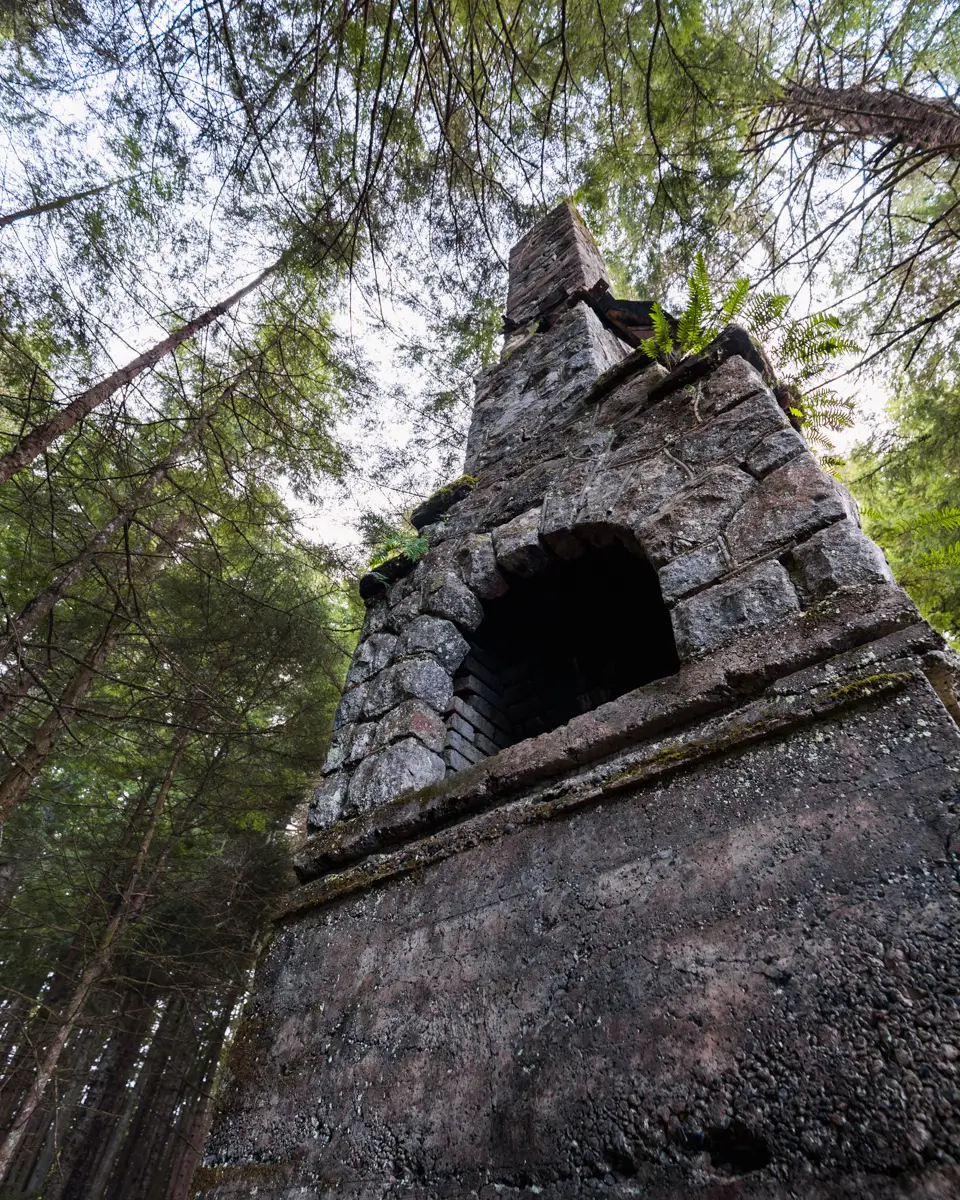
When hiking it’s important to avoid harmful practices such as disturbing plants or rock-stacking, or removing any natural object from flowers to rocks, as it’s important to leave the environment as natural as possible for the animals and for fellow hikers to enjoy in perpetuity. As many flowers as there are, there are few enough that if we all took one, then there wouldn’t be any left. Take only photos, leave only footprints.
If you haven’t heard of Leave No Trace principles, they’re also really essential to read up on before heading anywhere into the outdoors in general. Following these important principles basically means doing your best to leave beautiful places like the Suquash Mine ruins as good (if not better) than you found them, both for their preservation and for the enjoyment of other visitors.
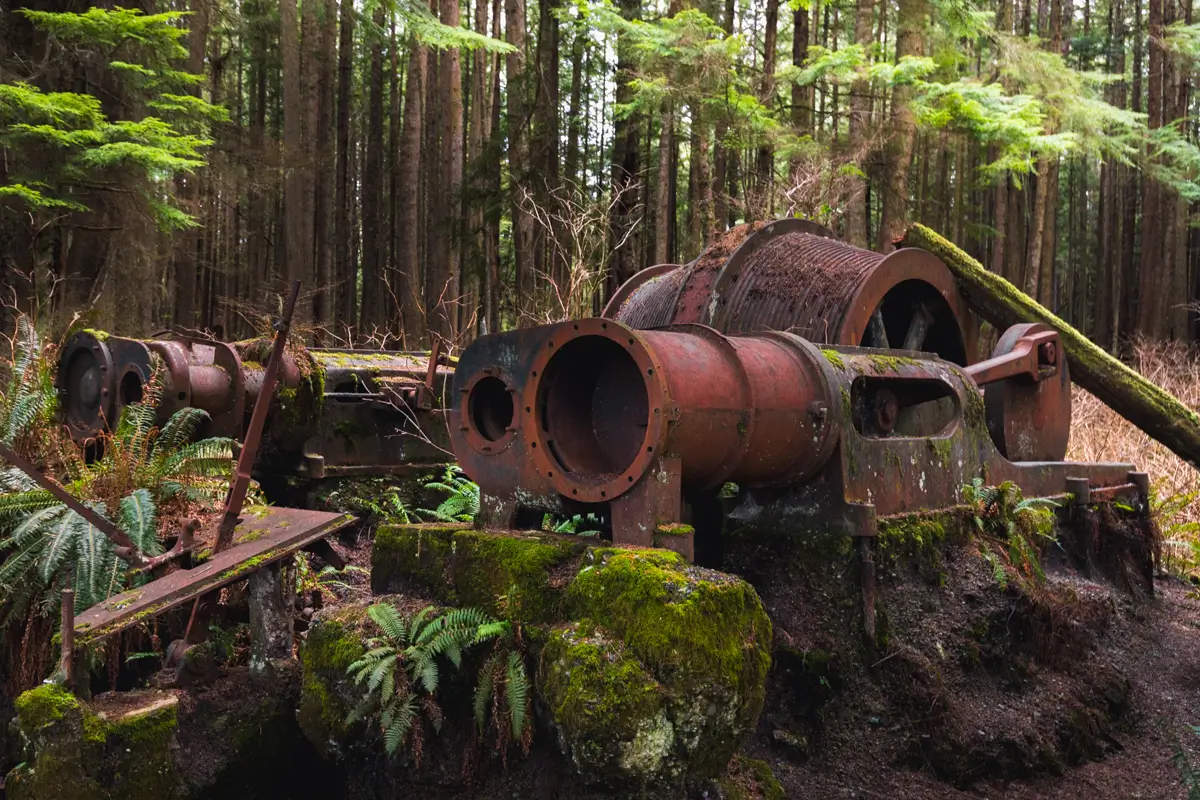
Suquash Mine Ruins Round Trip Details
Distance: 1 KM / 0.6 MI
Elevation Gain: 20 m / 65 FT
Hiking Time: 30 Mins
Hiking & Safety Tips
- Prepare for the possibility of wildlife encounters. There are almost no grizzly bears on Vancouver Island, but black bears are still common. Bear bells are proven to be an ineffective bear deterrent, and are even actively discouraged by Parks Canada. The best way to let bears know you’re around is simply to use your voice. Make sure to keep a respectful distance from wildlife and never feed the animals. It may seem kind but it doesn’t just kill wildlife and put people in danger, it’s also in many cases illegal.
- Research current trail conditions and make sure you are well-informed about the route before you leave, and assess if it is within your capability. Be aware of what time it gets dark and check the weather forecast. Make sure to tell someone where you’re going and when you expect to return. Every year as more and more people try hiking for the first time, the number of rescues goes up. Being prepared is the best defense.
- Pack everything you need for a successful hike, including enough water and energy-rich snacks. Remember to pack out everything you pack in though – don’t expect to find a convenient garbage can halfway up the trail. Bring appropriate layers (remember you’ll warm up once you start hiking) and sun protection. Hiking poles may be helpful but are not required. In addition to not leaving any garbage on the trail yourself, I highly recommend bringing a garbage bag and collecting any trash that you do see on the trail. You’re guaranteed to make the walk to the Suquash Mine ruins a more enjoyable experience for the next person.
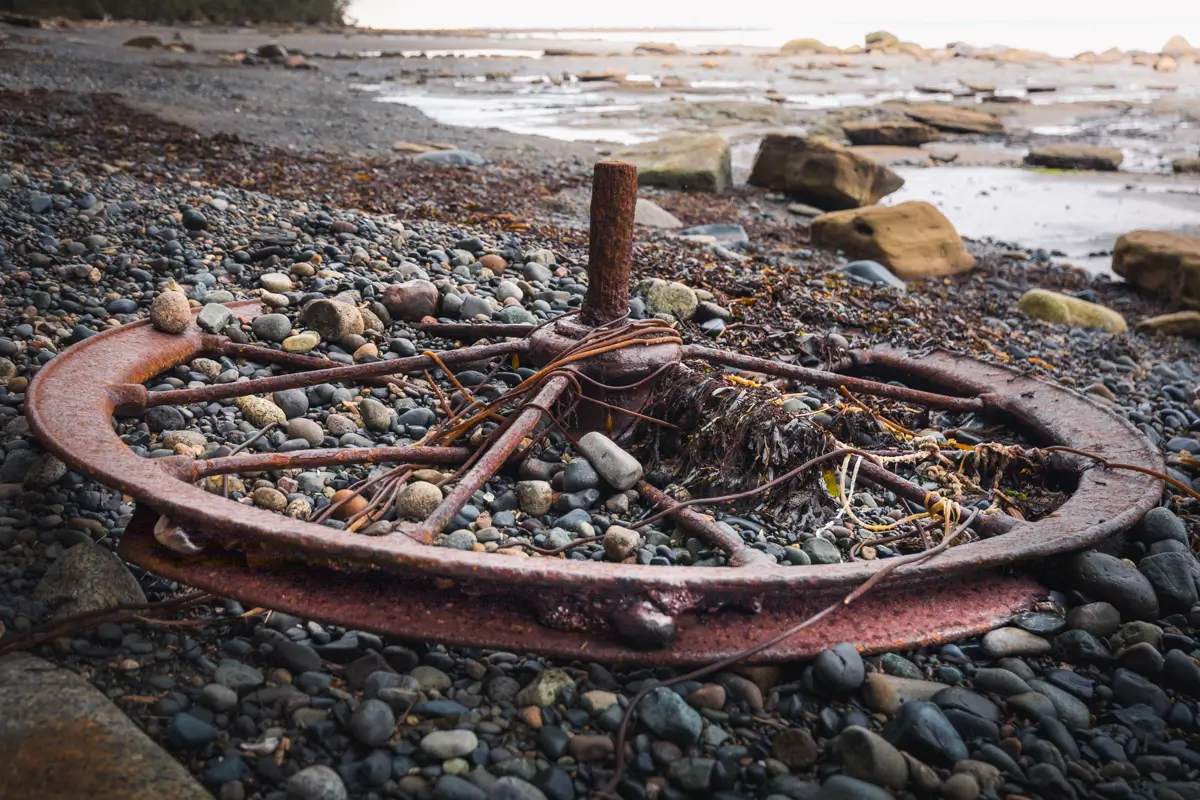
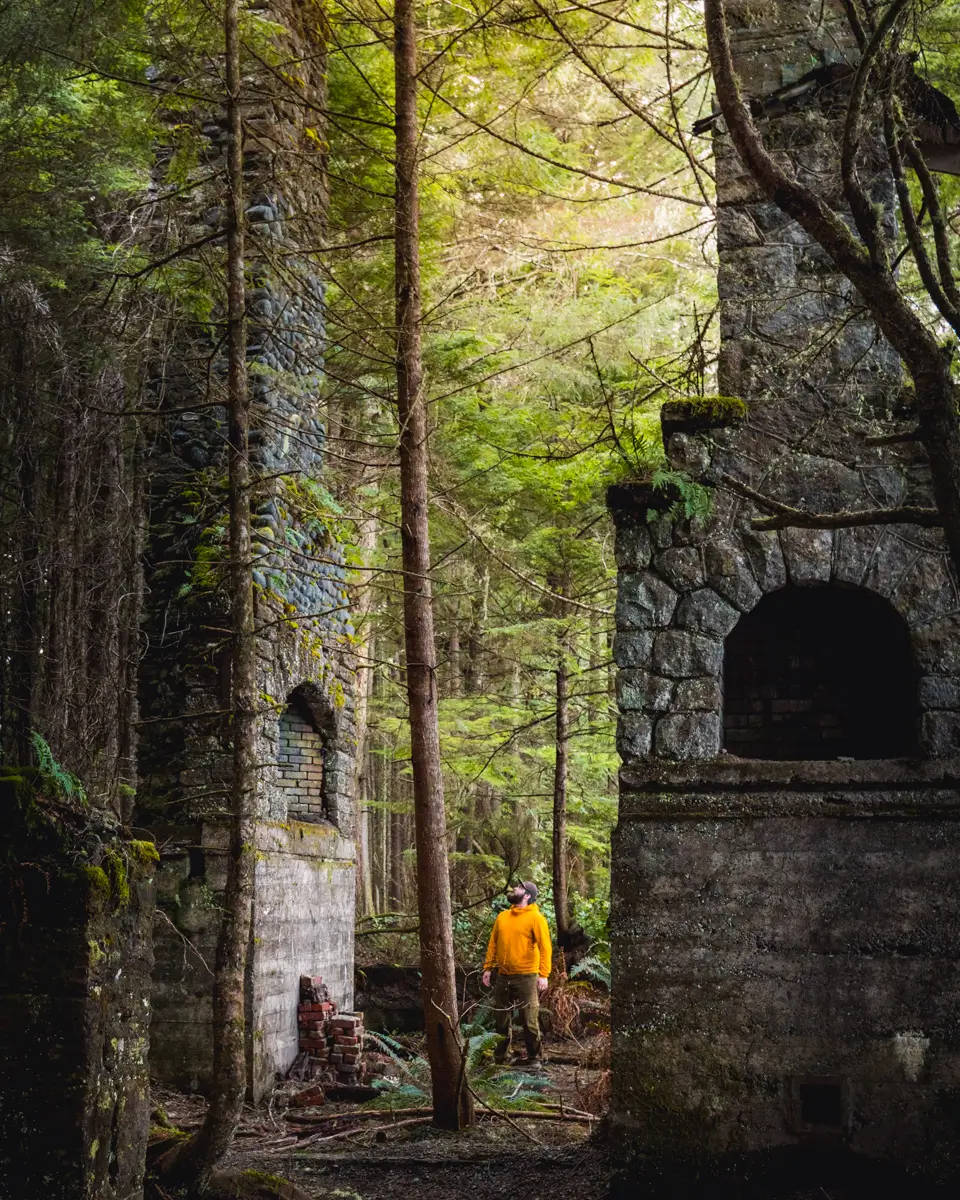
How to Get to the Suquash Mine Ruins Trailhead
From Port McNeill, drive south via Campbell Way to get onto Highway 19, the main route in Northern Vancouver Island. Make sure to download all directions before leaving Port McNeill, as you’ll soon lose signal. Drive north for about ten minutes, turning right after 12.5 km. Take an immediate left onto Rupert Road, a gravel road that parallels the highway. Follow Rupert Road for 4 km before turning right onto Suquash Main. Suquash Main heads north through boggy forest. After about 3 km, you’ll see a small pullout on the right side of the road with a small “Suquash” signpost.
Click here to open the exact trailhead location in Google Maps.
Walking to the Suquash Mine Ruins
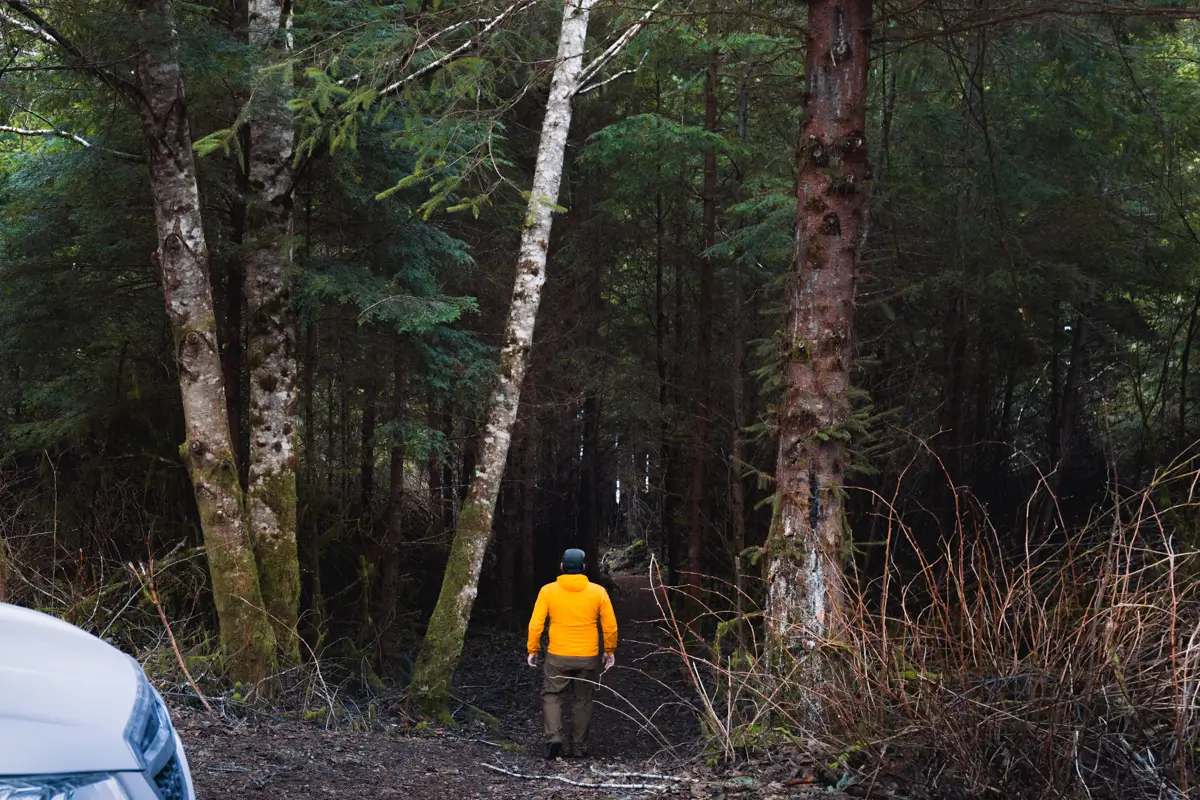
Heading straight into the woods, the trail is obvious from the small pullout.
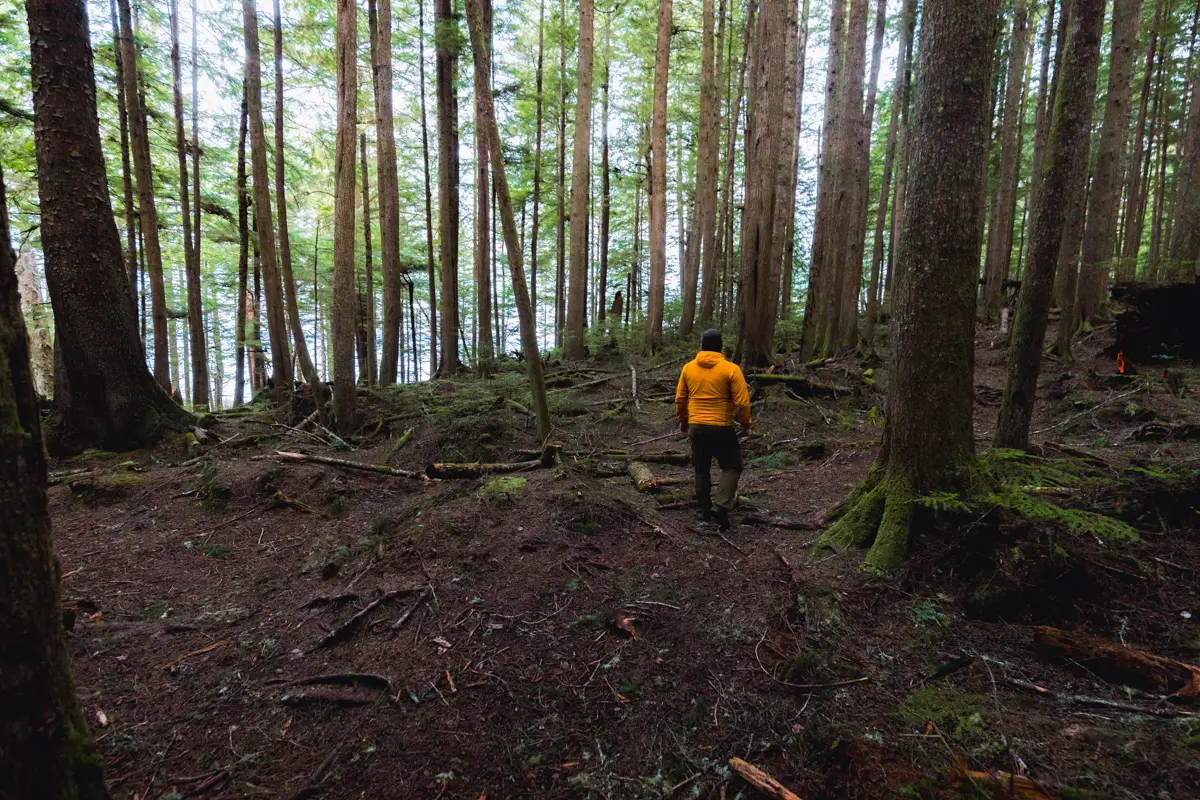
This is an important fork that’s probably only about a minute down the trail. As you can see the trail is a little bit indistinguishable from the rest of the ground, so it’s easy to miss. From here one trail continues straight down towards the ocean, while another trail sharply turns to the right towards the ruins. Note the red trail flagging at right.
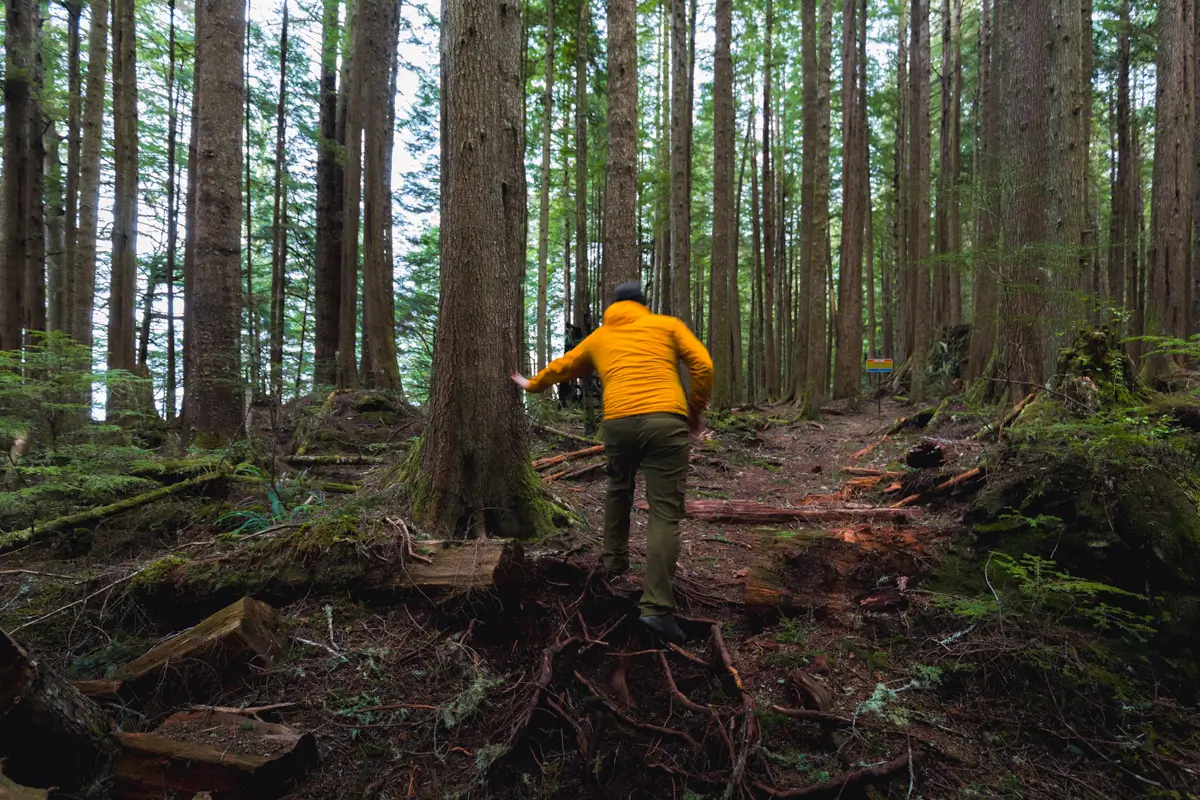
The trail is a bit muddy and rooty, but mostly quite flat.
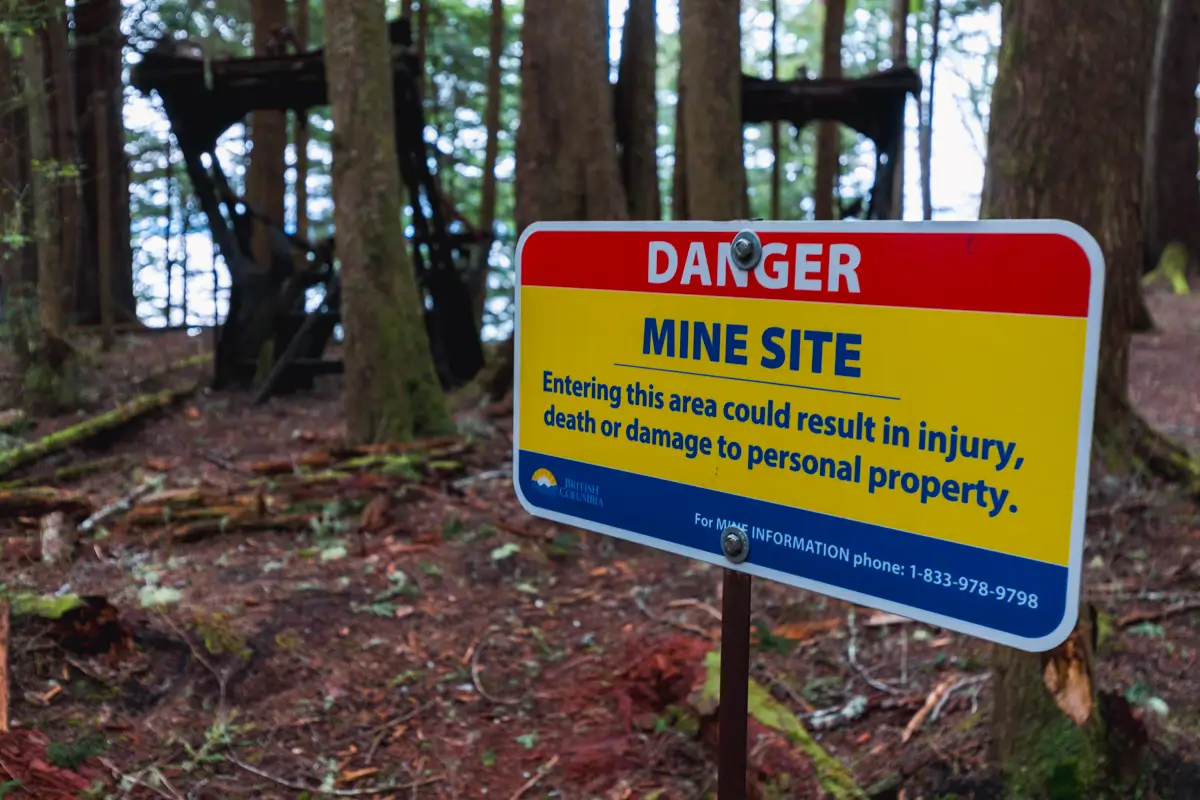
Better turn back.
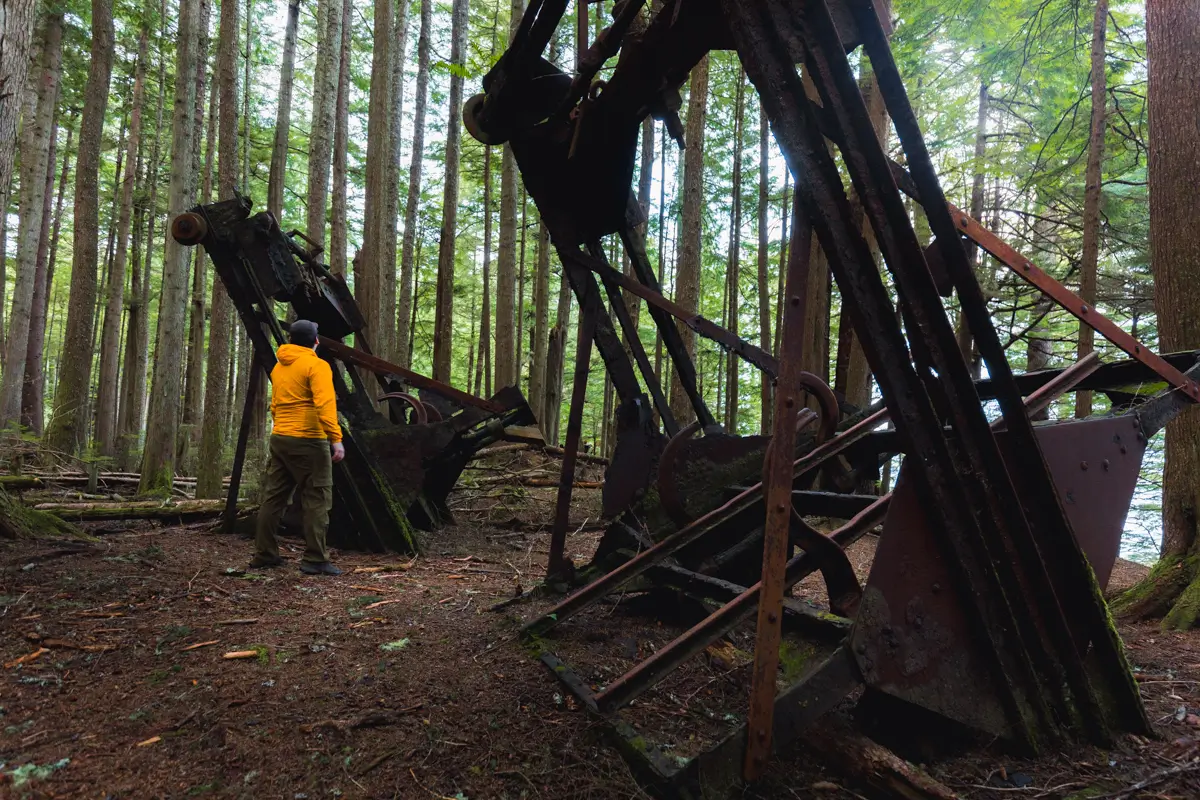
The first sign of the ruins. Someone smarter than me has suggested these are dumping mechanisms for small railway cars.
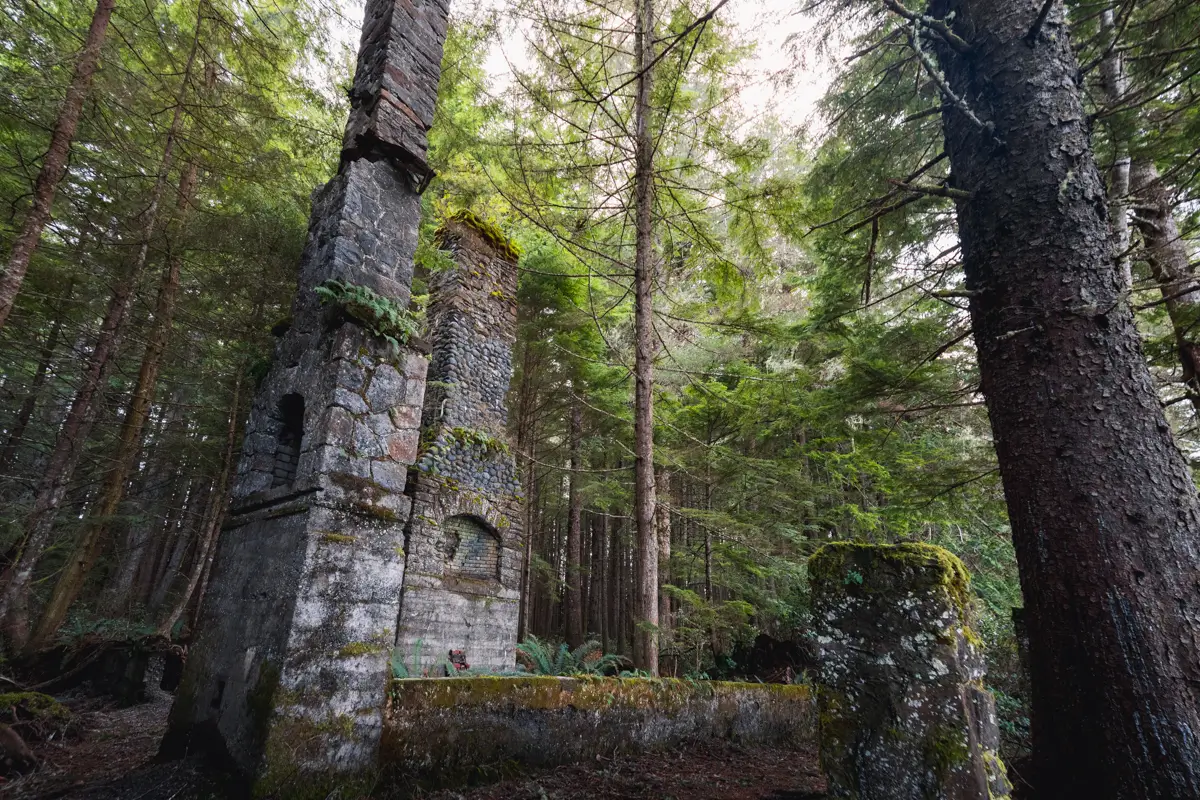
One of the most interesting parts of the walk are these – the stone chimneys which are prettymuch all that remain of the mine manager’s residence.
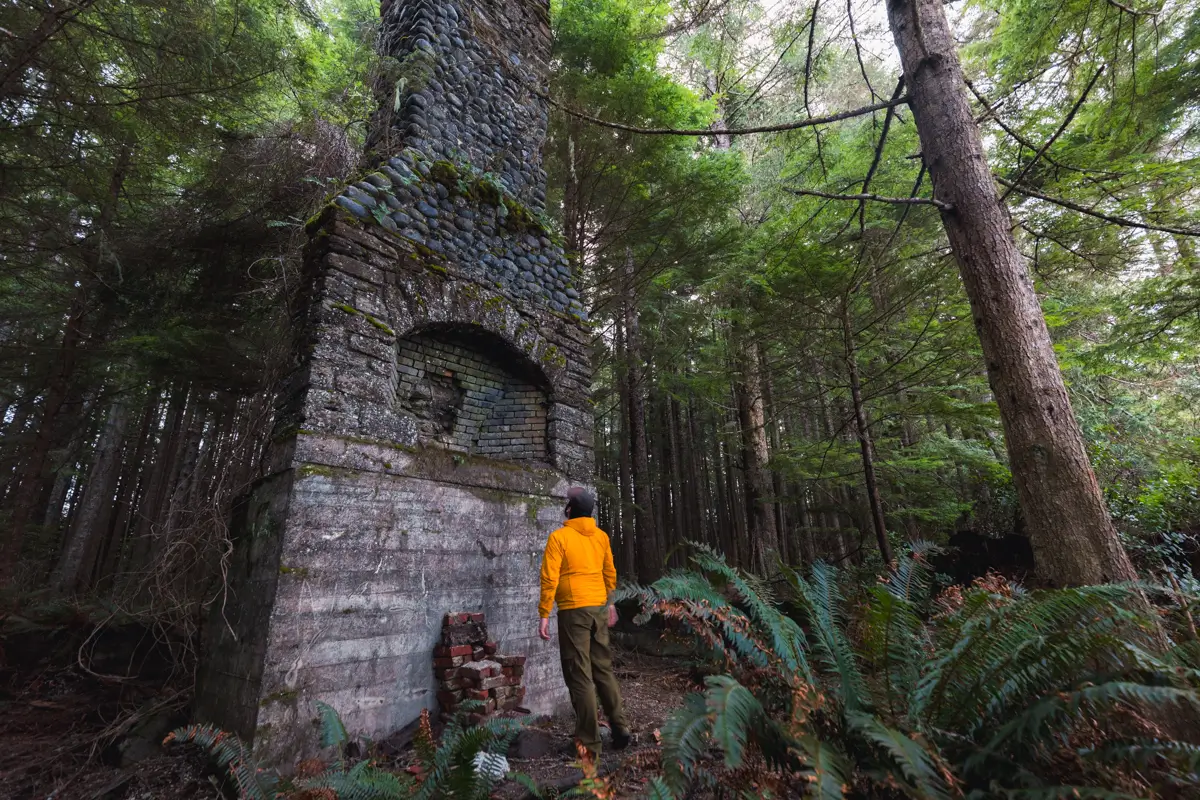
A closer look.
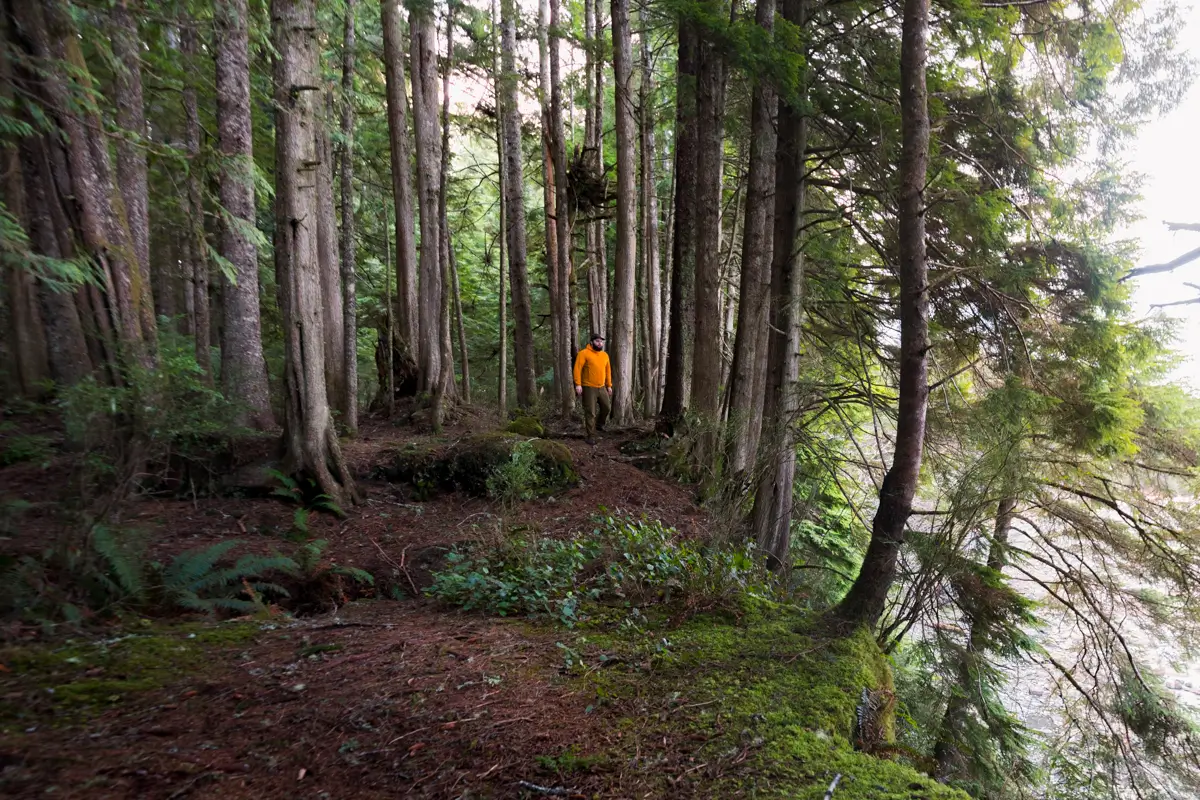
The trail meanders along the top of a steep cliff. The ocean is visible in the distance below.
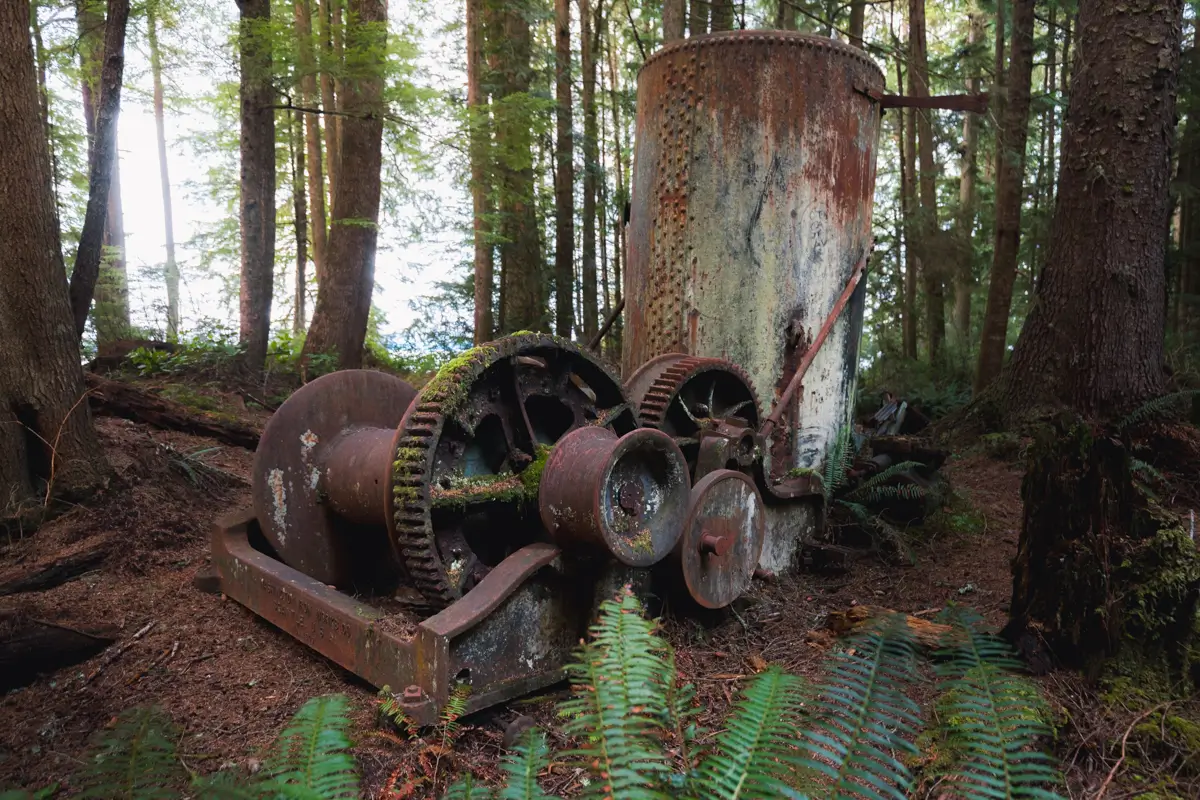
Approaching the main mine working area, this large steam winch comes into view.

This huge engine is close to where the old mineshaft probably is, and marks the end of the walk. From here I continued back to the inital fork to follow the trail down to the ocean.
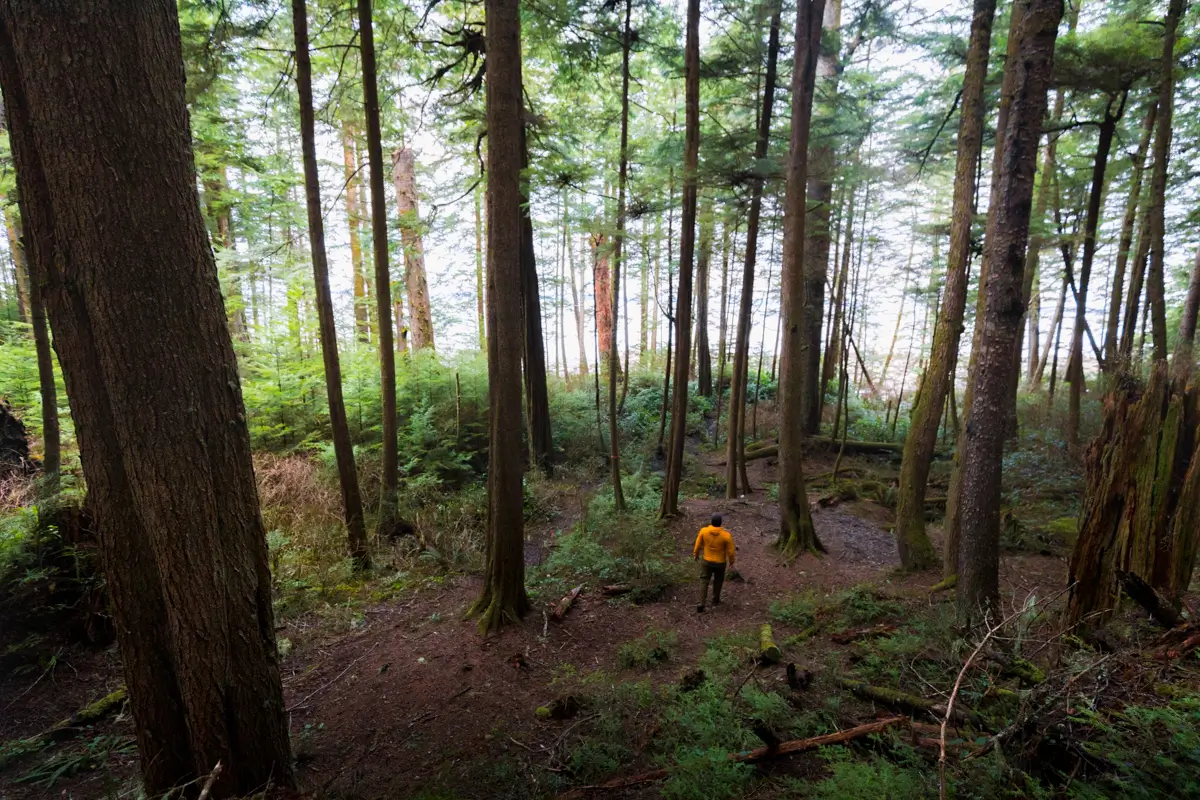
There are actually a few beautiful old-growth trees remaining along the trail down to the beach, so keep an eye out.
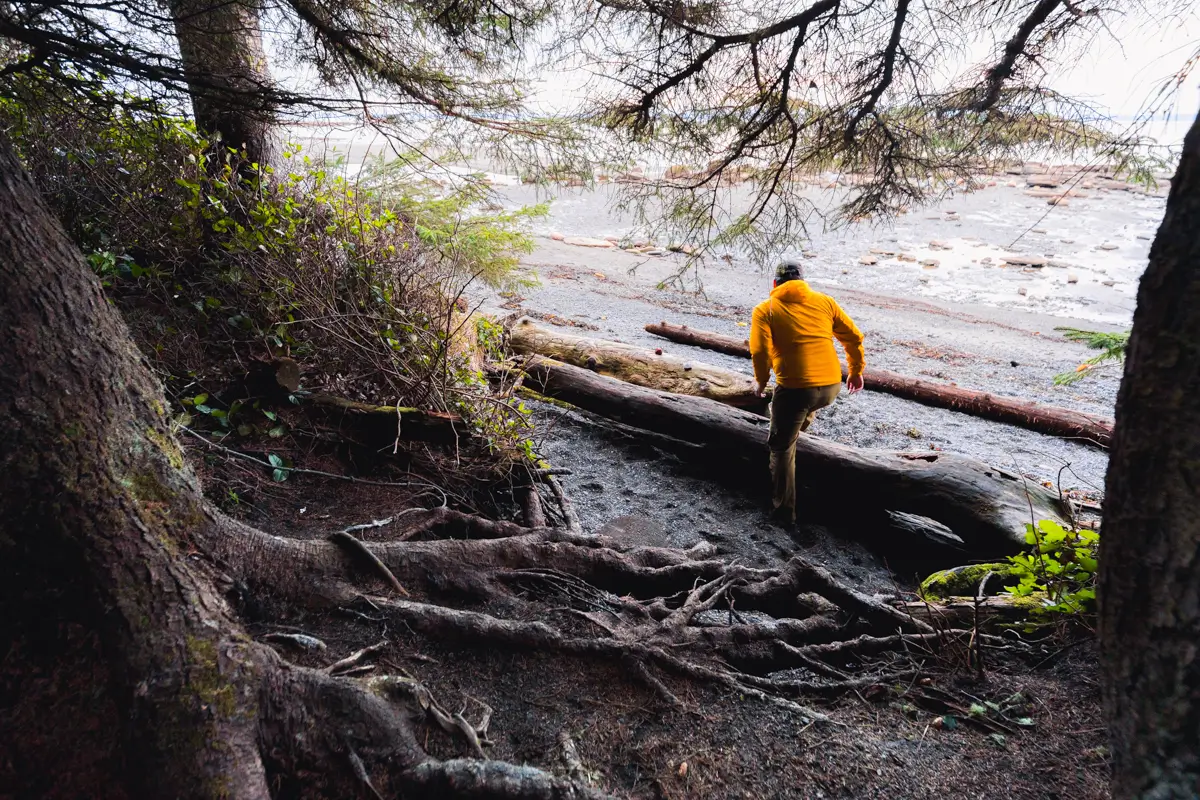
Approaching Suquash Bay.
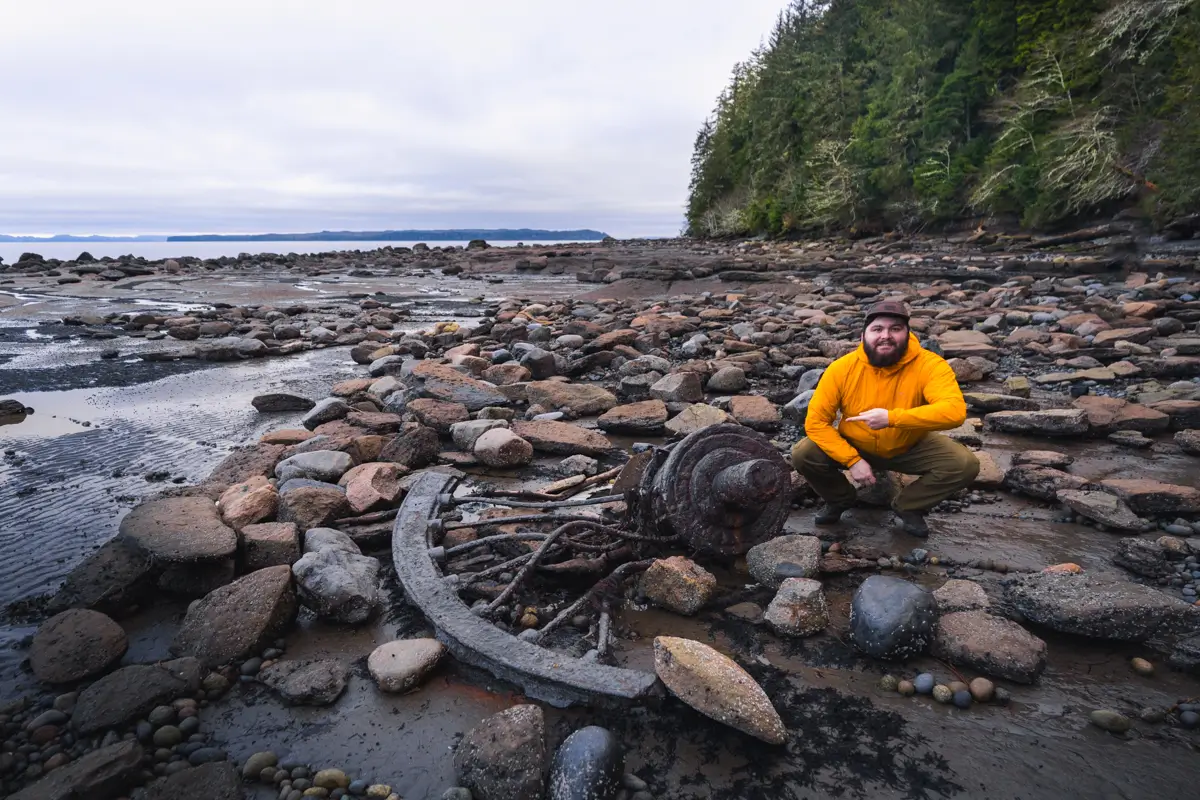
There are two large wheels located close to each other along the rocky shoreline. See if you can spot them.
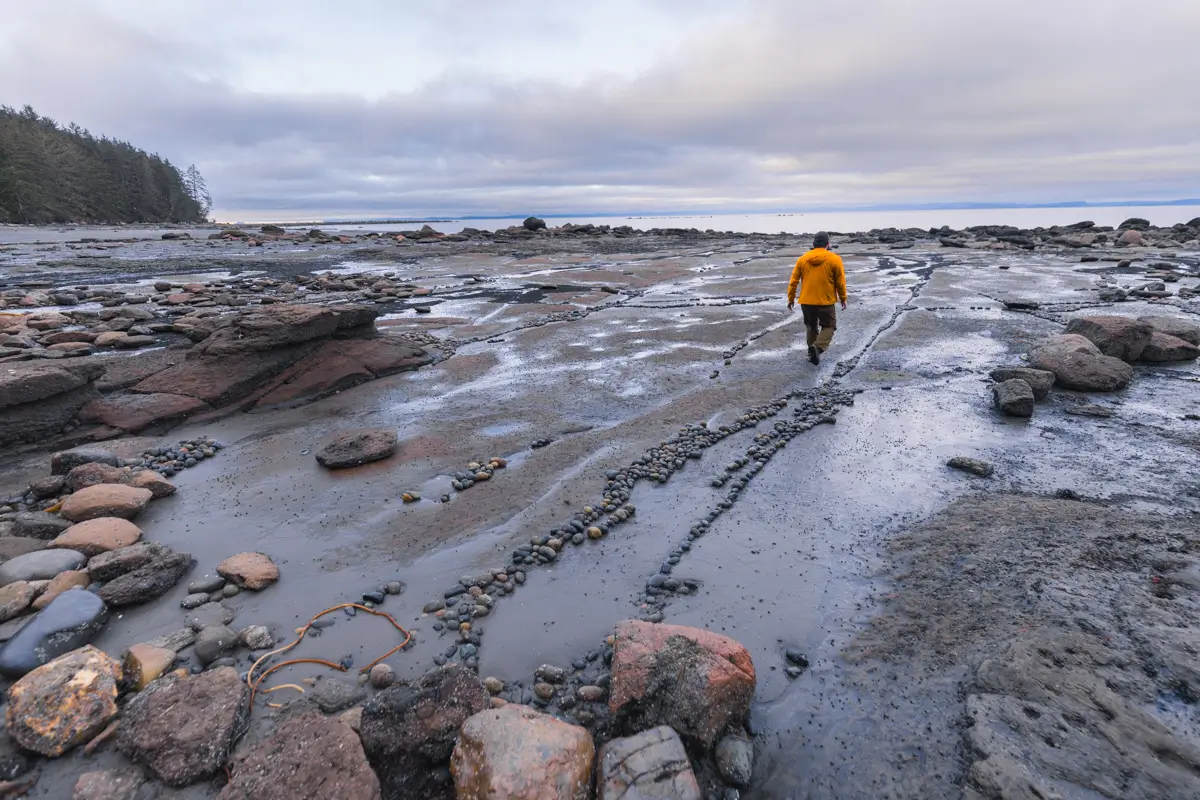
Notice how the rocks and pebbles are clustered together in lines along along the shallow troughs worn away in the stone.
Recommended Hiking Gear



Water is a must whenever I’m hiking, especially if the sun is going to be out. My favourite water filter I’ve used is the Katadyn BeFree 0.6L, which unlike other water filters I’ve used packs up really small and lightweight. For hikes where I know there won’t be any readily available water sources along the way, I make sure to bring my own. The Hydrapak Stow 1L bottle is my go-to, for the same reason that it’s made of a soft plastic that folds up and doesn’t take up any more extra space than necessary in my pack. Finally, Aquatabs are another great option for purifying water, with one tablet being suitable for one litre of water. I previously used the Grayl water filter while travelling internationally, and though I found its hard body more convenient for day to day use and easier to drink from, it has a little too much bulk for my fast-and-light style of hiking.



The secret to all my photos of gorgeous sunset and sunrise mountaintop views? A lot of hiking in the dark. And let me speak from personal experience when I say that the last thing that you want to happen when hiking is to be caught in the dark without a headlamp. I used the Black Diamond Spot 400 for years and it worked great – until I lost it on top of a mountain somewhere. The only downside to it was having to worry about the batteries dying, though there’s also a slightly more expensive version that has a rechargeable battery. Nowadays I’m using the Petzl Actik Core, which is a bit pricier than the more budget-friendly Black Diamond, but is also brighter, more comfortable (in my opinion), and has a hybrid power system that is rechargeable but can also take AAA batteries if needed.
You won’t see me using trekking poles on shorter hikes often – but on long hikes and backpacking trips, as well as certain scrambles, they are an absolute lifesaver. I’ve invested in a high quality ultra-lightweight pair of MSR DynaLock Ascent carbon poles which, while pricey, I don’t regret one bit. If you’re not entirely sure how much use you’re going to get out of a pair of trekking poles, the best budget-friendly option would be the Trekology Trek Z 2.0. Amazon does sell a lot of cheaper Made in China-style trekking poles for cheaper, but these usually are much much heavier and not worth buying.
All the best and most long-lasting cables and power banks I’ve ever owned have been Anker. I once had a phone cable from them that lasted me over three years of daily use! That’s why I keep an Anker PowerCore Essential 20K power bank on me. Like many people I use my phone for a lot of stuff when hiking (checking in with family, using online maps, taking photos, flying my drone) so I like to be prepared for that low battery warning by having a backup power source on me just in case.



The only socks I ever buy for myself are from Darn Tough, and I almost always make sure to wear them when hiking. After years of having no problems only wearing these comfortable and rugged socks for hikes, I accidentally wore a pair of no-name socks on a hike last year and ended up with blisters on both feet. Safe to say I’m back to sticking with the Darn Tough. And the best part? They have a lifetime guarantee, meaning that if they ever wear out you can send them back for a brand new pair. For hiking footwear I go between a pair of lightweight approach shoes for quick and dirty mountain ascents or anything involving scrambling and more heavy-duty boots for longer treks. I’ve worn a couple different versions of the lightweight but super durable Arc’teryx Konseal FL 2 approach shoes for a few years now and am very impressed with the durability. I also really like the thick toecap that keeps me protected every time I stumble into a root or large rock. For longer, tougher, or muddier treks I rely on my LOWA Camino EVO GTX, which I find insanely comfortable and made of very high quality.



I wear my Ar’teryx Gamma Lightweight Pants on every single hike I go on, and on many days when I’m not hiking. After several years of abuse they are still holding together extraordinarily well, with only a few small holes from where I’ve fallen down and some slight stains from being repeatedly coated with mud. They’re lightweight, breathable, and super comfortable. For lightweight and breathable hiking tops I’m a big fan of both the Patagonia Capilene Shirt and the MEC Core Shirt. My Arc’teryx Squamish Hoody shows up in a lot of my photos. It’s super lightweight and packable, and does a great job of cutting the wind while also being pretty breathable. I also have an Arc’teryx Atom Hoody and Arc’teryx Beta LT that I pull out for cooler or wetter conditions.
I hope you enjoyed this guide to visiting the Suquash Mine Ruins on Vancouver Island! Feel free to leave any questions in the comment section below or to contact me directly via social media.
